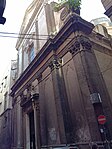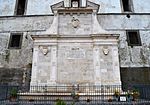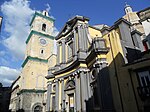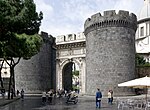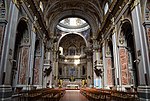Palazzo Ricca, Naples
Baroque architecture in NaplesPalaces in Naples
The Palazzo Ricca is a monumental palace, located on the southernmost end of Via dei Tribunali #231, in central Naples, region of Campania, Italy. It presently houses the archives of the Foundation of the Istituto Banco di Napoli. The palace is just down the street from the entrance to Castel Capuano
Excerpt from the Wikipedia article Palazzo Ricca, Naples (License: CC BY-SA 3.0, Authors).Palazzo Ricca, Naples
Via Concezio Muzy, Naples San Lorenzo
Geographical coordinates (GPS) Address Nearby Places Show on map
Geographical coordinates (GPS)
| Latitude | Longitude |
|---|---|
| N 40.852759 ° | E 14.262964 ° |
Address
Archivio Storico e Biblioteca del Banco di Napoli
Via Concezio Muzy
80139 Naples, San Lorenzo
Campania, Italy
Open on Google Maps
